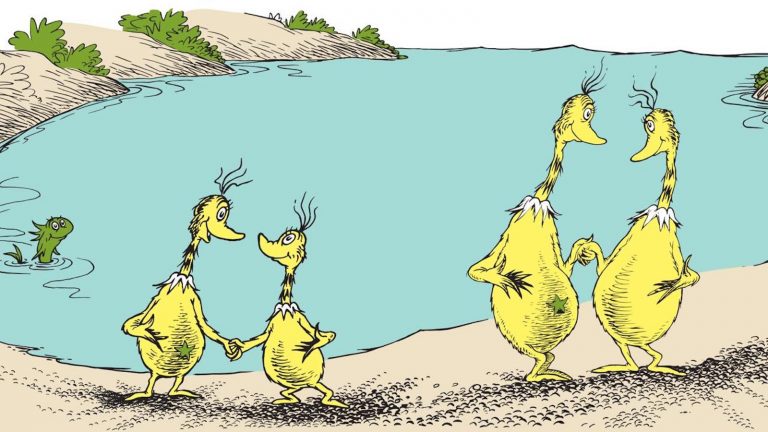
About a year ago, we upgraded the thermostats in our home from the simple little button kind to the fancy Google Home Nest version. They have no buttons, just a sheen face, and look really slick. Supposedly, these were the way to go because you could control every little thing from your phone. The app would allow you to change temperature, schedule the heat or cold during certain times of the day, and certain days of the week. I even got the impression that it could magically sense when you were home, or not, and adjust the temperature accordingly. I was excited.
Until I tried to set it up. I’m not a tech novice, but setting this thing up was not simple. I won’t even tell you how long it took. What’s worse, is that I had to refer to a youtube video to do it, and even then it took way too long. Eventually we got it sort of running.
Fast forward about 2 weeks and the thermostat in our main living area stopped working. No matter what we did, it gave an error message, which sent us to searching online message boards to discover it had no power source. Well, I had no idea how to fix that, so we went without, it wasnt too hot so we let it go.
Fast forward to yesterday, we had a maintenance check on the A/C units and I mentioned to the technician that we had been having this issue for several months, and to see if he could figure out what was wrong. Five minutes later, after running up to the attic, he informed me that a simple cord had been left unplugged, and that he plugged it in, and it should work like a charm.
Six months of summer struggle fixed in 30 seconds by plugging in a cord. Seems about right. I then spent the next 30 minutes re-learning how to program the system on YouTube and we are back to normal. Seems like a lot of extra complication to get back to the way it was before. Sometimes we complicate things that don’t necessarily need to be.
Life can also be complicated. Or, sometimes we can make it that way. Look at the title of this post, for example. There are likely 4,678 other titles that could better articulate my ideas in a much more concise, direct, and appealing way. But, instead, I went with the over-complicated, alliteration-attempting, tongue-twister version that no one can read through without getting a slight headache. I guess I should start listening to my own advise when picking post titles.
One of the most common ways we can overcomplicate our lives (besides upgrading to a Nest home thermostat) is in our quest to figure out exactly who we are. Our identity is inseparably connected to our purpose. And our purpose drives the decisions we make everyday. When we have a clear understanding of who we are, we have a clear purpose, and a clear path to our goals and destinations.
When we are fuzzy about who we are, our decisions, actions, and goals likewise can be complicated, ambiguous, and vague. We all want to fit in, and play our part in a meaningful life story. This aspiration is what drives us to determine who we really are, and where we really belong.
We all share this eagerness to belong. But, if we aren’t mindful, our uber-concentrated efforts to fit in somewhere, or anywhere, can fog our thought process, and overcomplicate our understanding of our most fundamental identity.
Dr Seuss’s Story about the Sneetches is a perfect example of this. When this overcomplication happens in our own lives, we may end up picking and choosing the fancy, or popular labels, identifyers, and metaphorical “stars” to stick on ourselves. These are often meant to help us feel like we belong, but can oftentimes overshadow and hide our true identity.

This leads us to the big question…
What is our purest, most fundamental identity?
What is the biggest “star”, or label we should be placing upon ourselves?
In our church, one of the first songs we learn as kids is a simple answer to this big question…
That is our truest identity. It is who we are underneath all the extra superficial fan-gear, hats, facepaint, stickers and labels. And, as a child of God, we have unlimited divine worth and potential. That is our shiniest star. That is who we are at our core.
When we understand and accept this identity, it informs and guides our actions. It gives us purpose, and an ultimate divine destination. Understanding and acting upon our true identity can help keep our lives simple, and help us focus on what is lasting and important.
Many of the secondary labels we affix to ourselves can be fun. I’ve labeled myself a Utah Ute, a Payson Lion, a wanna-be triathlete, and a Bosa buttermilk-donut-addict among many others. Most of the time, these “stars” we slap on ourselves are harmless. We get together with other similarly starred sneetches that look, think, and believe like us, and cheer for a team, enjoy a hobby, or stuff our faces with sugary scrumptiousness. But all these secondary labels are less important and should not be the determining factor on how we treat, or interact with other people in our families or society.
Not all labels are benign, however. Some Sneetch stars can be a problem. Whenever any label displaces or replaces our most important one, it weakens our clarity, understanding, and eventually the committment to our divine potential.
When these sneaky, popular and flashy stars start to drive our thoughts and actions, we begin to limit ourselves and our eternal growth. These ever-changing and morphing imposter stars supposedly meant to help us feel more included, instead become a hindrance, and a stumbling block in our development.
These labels or stars can overpower our persona. We can end up portraying ourselves as a wholesale representation of the label itself, instead of a person who enjoys that particular trait, hobby, or characteristic. We become the label, rather than the label representing just a small part of a larger, more complete, more comprehensive whole.

This is the Big Box Paradox. Our intent may be to gain acceptance and belonging into a larger community when we label ourselves a certain way. Instead, we end up further isolating ourselves and limiting ourselves into ever shrinking identity boxes. For example, when my primary label is “Yankees fan”, my prospects for making friends barricaded in the Red Sox box tend to get smaller. When my primary label is a “Militant Vegitarian”, it becomes a bit harder to hang out every weekend at the Brazilain Churrascaria with the “Meat Freaks”. It becomes even more intense and tenuous when these pre-packaged, and pre-labeled boxes become political, racial, or centered around many other hot-button cultural or societal issues.
Our society can be a true melting pot of these political, racial, cultural, and even spiritual identifiers, and still live together in mutual respect, love, and understanding. This becomes doable, only if we keep our identifying stars in the correct and proper order. It will work if we are committed to the things we have in common more than we are committed to our inevitable differences. That was the lesson the Sneetches had to learn!
These principles are not new or novel. They have been taught from the beginning.
King Benjamin in the Book of Mormon taught about the best Sneetch star thousands of years ago…
“And now, because of the covenant which ye have made ye shall be called the children of Christ, his sons and daughters…I would that ye should take upon you the name of Christ, all you that have entered into the covenant with God…” -Mosiah 5:7,8
The Psalmist was also on board…
“I have said, Ye are gods; and all of you are children of the most High.“ -Psalms 82:6
It continues today, our prophet recently addressed this exact issue in a talk he gave to young adults…
“I am simply saying that no identifer should displace, replace, or take priority over these three enduring designations: child of God, child of the covenant, and disciple of Jesus Christ.”
Are we all there yet? Do we all avoid judging others or stereotyping others based on appearance, or perception? Maybe not. But, if we choose to take an honest new look at how we really perceive the world and the people who live in it, and try to see the value in others that lies underneath whatever stickers and labels they have on display, we can get a bit closer to that ideal.
Our goal should be to see others the same way God does. That is the standard. Nephi describes God’s inviting love for everyone, with all their different stars, in the Book of Mormon…
“…he inviteth them all to come unto him and partake of his goodness; and he denieth none that come unto him, black and white, bond and free, male and female; and he remembereth the heathen; and all are alike unto God, both Jew and Gentile.” -2 Nephi 26:33
Let’s try to stop looking at society as if it were a chaotic frenzy of spilled skittles needing to be sorted, labeled, and boxed according to outward appearances, beliefs, activities, actions, skin color, social, or cultural differences. Let’s all try and simplify our lives and focus on our true identity, and let the divine nature inside each of us all shine brightest to steer our thoughts and actions- and be more loving and kind to all the other Sneetches in the process.

